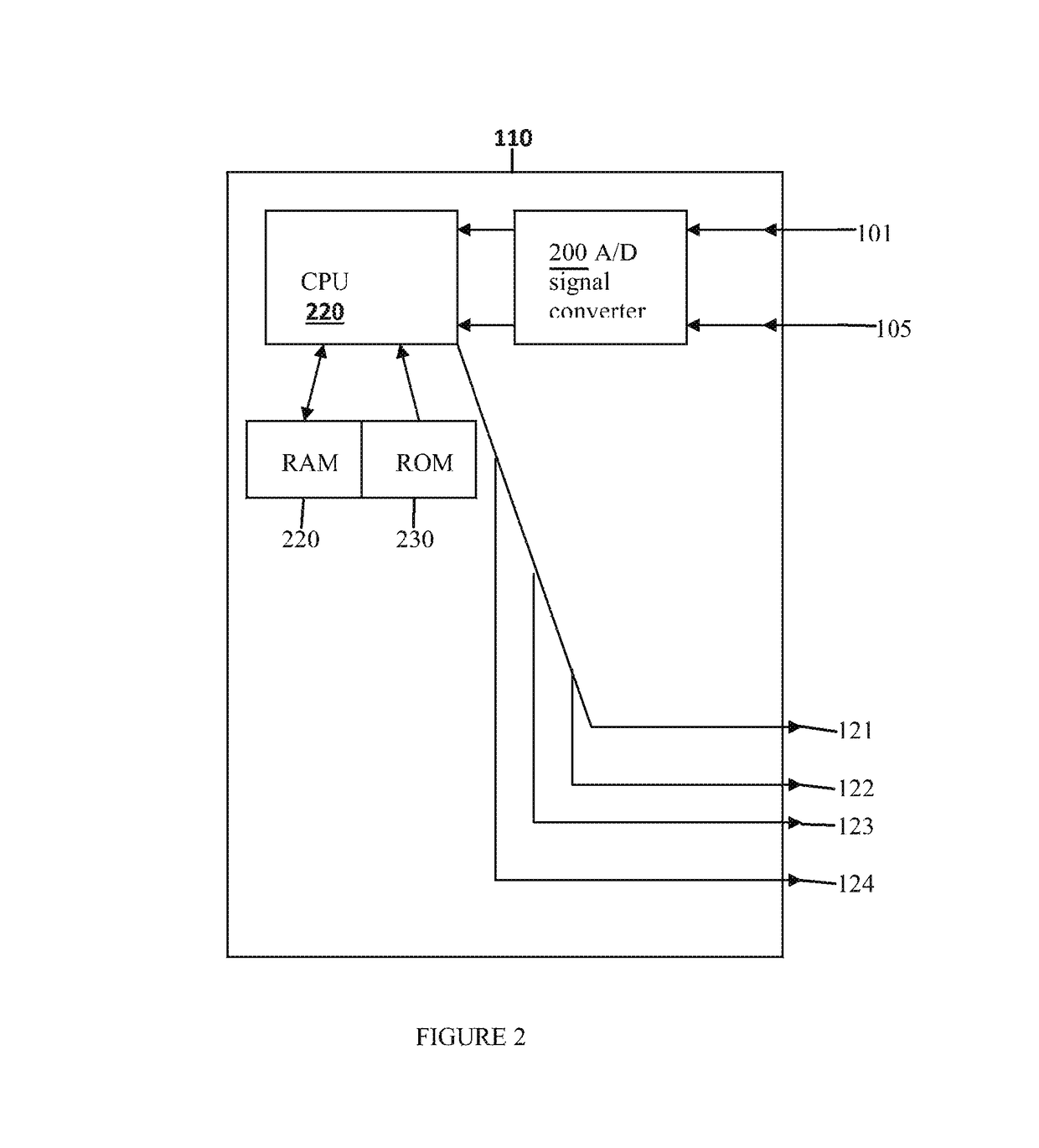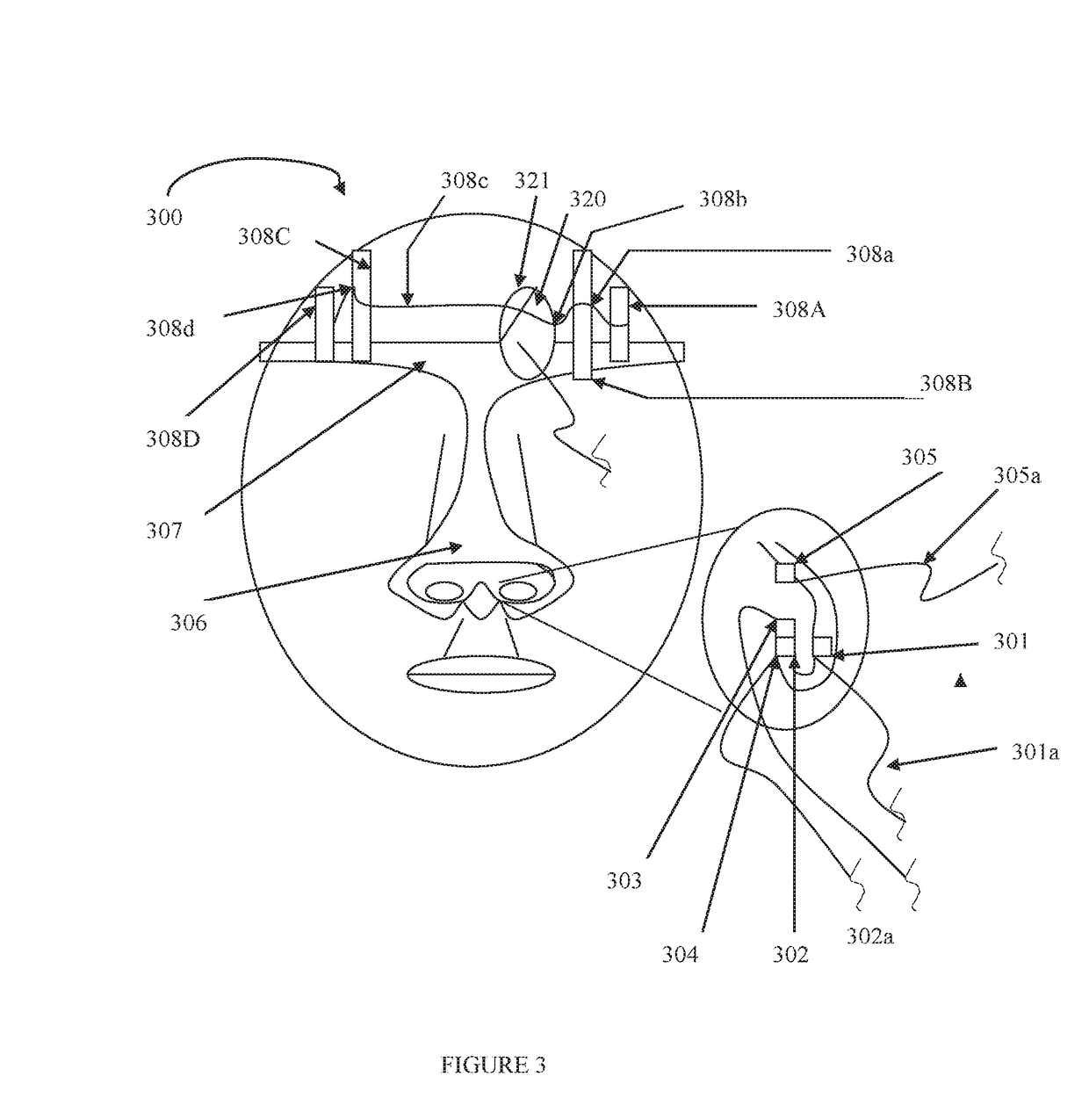Central site photoplethysmography, medication administration, and safety
a central site and photoplethysmography technology, applied in the field of central site photoplethysmography, medication administration, safety, can solve the problems of substantial risk, inability to monitor etco2, and inability to carry out many scenarios, so as to achieve enhanced safety, enhanced safety control, and low frequency
- Summary
- Abstract
- Description
- Claims
- Application Information
AI Technical Summary
Benefits of technology
Problems solved by technology
Method used
Image
Examples
example 1
[0383]In subjects receiving prescriptions for opioids and / or combinations of opioids with other medications, either prescribed or taken against medical advice (e.g. ethanol), which increase the potential for drug overdose / respiratory depression / arrhythmias (oxycodone, fentanyl TD, morphine ER, oxycontin, dextromethorphan in combination with others) for home use, adherence and well being are monitored using a cardiorespiratory-based PD sensor according to the invention.
[0384]For oral medication(s), the patient is provided with a small microprocessor / microcomputer that is worn on the belt (or over the ear similar to a hearing aid) and attaches (either directly or by communications such as Bluetooth) to a small sensor array which is attached at a single point of contact (SPOC) to one nasal ala. The SPOC array consists of one or more of the following: an extremely small pulse oximeter sensor (photodiodes [one or more LEDs] and a photodetector), a nasal pressure sensor, one of at least t...
example 2
[0390]Optimal sedation in patients undergoing colonoscopies using a combined PK (e.g. using breath analysis used to measure blood levels of propofol)-, and PD (e.g., using cardiorespiratory-derived parameters from PPG)-based system to control of an infuser device is used to safely deliver IV propofol. A PK+PD-based propofol infusion system that provides drug effects on respiratory and cardiovascular systems is therefore enabled and is easily implemented by those skilled in the art in light of the teachings provided herein.
[0391]In the case of propofol, it would be ideal to have a drug delivery system that would guide intravenous (IV) infusion rates based on a closed loop or “advisory” control system using both PK (relationship between propofol dose and propofol blood concentration) and PD (relationship between propofol blood concentration and biological response, namely effects of propofol on cardiorespiratory function predominantly via biological effects of propofol on the brainste...
example 3
[0401]Alcohol (e.g. ethanol) is detected (important during titration as well as chronic use) on breath during adherence testing for oxycontin. Subjects may be randomly called and requested to emplace the PD system on their nose, and / or to test for adherence, and / or to test for the presence of alcohol blood levels. A system used to monitor adherence to and / or to prevent diversion of oxycontin as well as automatically detect blood levels of ethanol (using breath) is incorporated into a PD-based system to measure the biological effect of oxycontin and any significant interaction with ethanol on cardiorespiratory function.
[0402]The diversion of prescription opioids for non-medical use is a national epidemic. In 2008 2.2 million Americans initiated nonmedical use of prescription opioids, and 1.24 million met DSM-IV criteria for opioid addiction (Substance Abuse and Mental Health Services Administration. (2009). Results from the 2008 National Survey on Drug Use and Health: National Findin...
PUM
 Login to View More
Login to View More Abstract
Description
Claims
Application Information
 Login to View More
Login to View More - R&D
- Intellectual Property
- Life Sciences
- Materials
- Tech Scout
- Unparalleled Data Quality
- Higher Quality Content
- 60% Fewer Hallucinations
Browse by: Latest US Patents, China's latest patents, Technical Efficacy Thesaurus, Application Domain, Technology Topic, Popular Technical Reports.
© 2025 PatSnap. All rights reserved.Legal|Privacy policy|Modern Slavery Act Transparency Statement|Sitemap|About US| Contact US: help@patsnap.com



